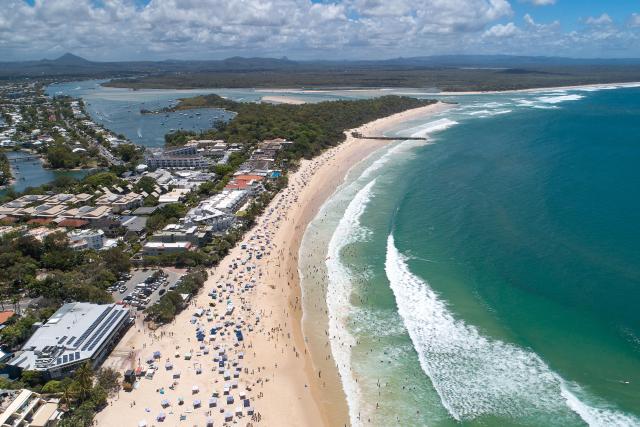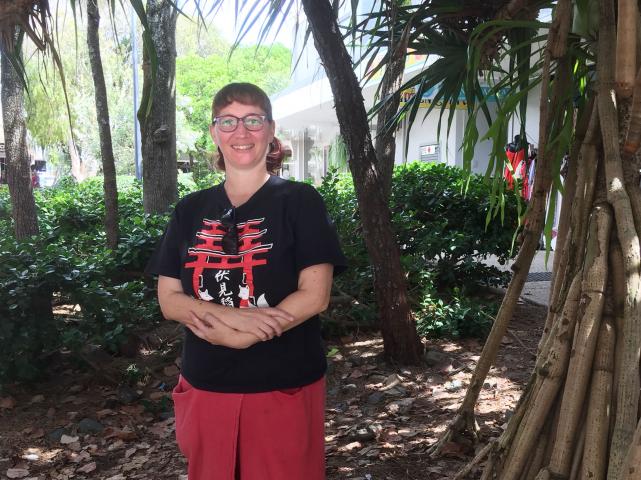Precede
Concerned that an influx of short-term accommodation (STA) was not only destroying her local Noosa amenity but impacting the rental market and housing crisis, University of the Sunshine Coast Building Design, Surveying and Certification student Lou Warwick decided to conduct a Noosa-based investigation of the issue for a research paper.
What she discovered was a situation resulting from the 2015 APHRA credit squeeze along with an increase in population, increase in owners occupying their homes and a low number of new builds. It had nothing to do with STAs. Lou Warwick presents us with her research findings.
The housing crisis is heard loud and clear across many platforms and is being felt across most of Australia’s highly populated areas.
Currently, the short term accommodation market (STAs) is receiving much of the blame for the lack of long term rental accommodation, high rents and homelessness.
In a recent 32-page research report focusing on the Noosa area from Peregian Beach to Tewantin over a 10-year period, it was found that STAs could not be blamed for the lack of available rentals.
Many topics were covered such as the local population, affordability, availability, new dwelling approvals, STA numbers and vacancy rates, with data sourced from the Australian Bureau of Statistics, Noosa Council, Coast2Bay Housing Group, SQM Research and AllTheRooms Analytics.
Census data revealed a steady increase in overall population for the Noosa area, an average of 1077 persons per year.
However, 2021 was the first year to see a decline in the working population. Otherwise, there was little change to the school age population and a slight increase to the retired population.
While the population had increased, building approvals for houses and units were in decline.
According to the Bureau of Statistics, 2017 saw Noosa approve nearly 700 dwellings while only 305 were approved in 2021.
Dwellings that were owned outright increased from 4882 in 2011 to over 7000 in 2021, suggesting that owners are happier to keep their homes. Mortgaged properties increased modestly from 3940 to 5195 while rentals struggled with an increase of 261 rented properties in the same 10-year period.
Noosa Council has expressed concerns around the number of empty dwellings. The number stayed consistent at around 25 per cent of all dwellings, which is in line with Noosa councils document stating that there were 5200 dwellings during 2021 that could otherwise be rented. However, unoccupied houses have been a long term issue and the 2021 census showed a decline in the number of unoccupied dwellings to 23 per cent.
Despite the pandemic, a sharp decline in rental availability was seen in 2021 and 2022.
SQM Research took an in depth look at the rental market on a year to year basis from 2016 to 2022, revealing a drastic drop from 176 available rentals in 2020, down to 36 rentals in the following year. The available rentals at census 2011 was 203.
This suggests that building approvals and rentals declined, while the general population and resident numbers increased. There was a positive shift towards outright owned and occupied family dwellings from the year 2020.
To further investigate the reasons behind the rental decline, the Bureau of Statistics was again the source for affordability.
Rent rates per week increased by an overall 42.8 per cent versus the average mortgage increase of 5 per cent over the 10-year period. There was an increase of 28.8 per cent of renters paying more than 30 per cent of their income to stay in their rentals within the last five years, while people paying more than 30 per cent of their income into a mortgage increased by nine per cent.
The real estate market has also been affected.
Sales of existing dwellings were generally in decline from a modest 2003 dwelling sales in 2016, down to 1572 dwelling sales in 2020; until the 2021 boom where it increased to 2276 sales and house values increased the most.
Dwelling values had otherwise remained steadily increasing. It was here that investor loans were noted to be in sharp decline after APRA’s Credit Squeeze in 2015, turning Queensland’s $1500 million dollar industry into a $500 million dollar industry by early 2020.
There has been a resurgence of loan approvals after the building incentives boom in mid 2020. Although, there is now a high possibility of many years to regain the rental properties that may have been.
Unemployment was not a concern for dwelling affordability, as the area has a fluctuating rate generally below seven per cent, with a recent low of 3.3 per cent, according to Noosa Council and the Bureau of Statistics.
Periods of low unemployment rates coincide with increases to weekly rental rates.
Furthering the data collected around affordability, it was found that the industry that employs the most persons is accommodation and food services. It is also the lowest paid of the top four industries. This could indicate more workers on lower incomes. It is also possible that the unemployment rate appears lower because low income earners have been forced to move to more affordable areas.
So, where do all the people in the area come from?
An average of 11,325 visitors stay in the Noosa area every night of the year, not including day trippers, with international visitors staying an average of 6.27 nights at a time and domestic visitors staying an average of four nights.
An STA analysis site, AllTheRooms Analysis, stated that there were only 1000 – 1500 listed STAs available at any given time in the four year period of and including 2019 – 2022 (listings were collected from multiple platforms such as AirBnB and Booking.com).
This is far less than the estimated 5200 unoccupied dwellings quoted by Noosa Council. Of the average 1113.5 available STA’s in the focus area, the average occupancy rate was only 41 per cent.
There is definitely an incentive to rent via an STA rather than long term. STA owners can earn an average $16,000 more per annum.
However, STAs have also been in decline over the four-year period with a loss of around 200 listings in four years.
Lastly, it was considered how people can gain assistance with housing when they are priced out of the rental market.
Coast2Bay’s financial reports revealed that while requests for assistance for housing had doubled in the last four years, affordable emergency dwellings had halved in the Noosa region to less than 50 dwellings. Sunshine Coast and Moreton Bay were the only areas showing an increase of affordable dwellings within the Coast2Bay program.
According to these research results, STAs are not the cause of long term rental high rents, low availability and homelessness for the research area. However, there is a connection between STAs and long term rentals which is based on the theory of supply and demand.
To recap, the number of dwelling approvals had a declining trend for 2017-2022, long term rental availability was in declining numbers from 2011-2021, STA rentals have declined in number from 2019-2022 and Coast2Bay’s affordable dwelling program had declining numbers of dwellings to the Noosa area. – all while the population increased steadily.
It is true that dwelling values have increased, long term rents have increased and STA rates have increased, perhaps out of range for many low income earners. However, this appears to be more of a long term supply and demand issue that has stemmed from the APRA Credit Squeeze of 2015 and lack of investor support or ability for increasing rental numbers in the research area.
Unfortunately, this is not an easy fix, as dwellings can take up to two years to complete from concept and a number of people who live and work in the Noosa region are somewhat transient in nature, many coming for a working holiday. Without affordable worker accommodation, the area will suffer further and it is not at the fault of the STA market.
There needs to be further study on this topic to confirm if the results found for the Noosa area are not isolated to the region and reflect the current housing crisis situation across Australia. This would suggest that the likelihood of APRA’s Credit Squeeze of 2015 is the likely cause of high rents, low availability and homelessness today.
(Lou Warwick has earned a double degree in Building Design and Building Surveying and Certification, and is working towards an honours in Surveying and Certification with an aim to become a licenced building certifier in the local area.)








